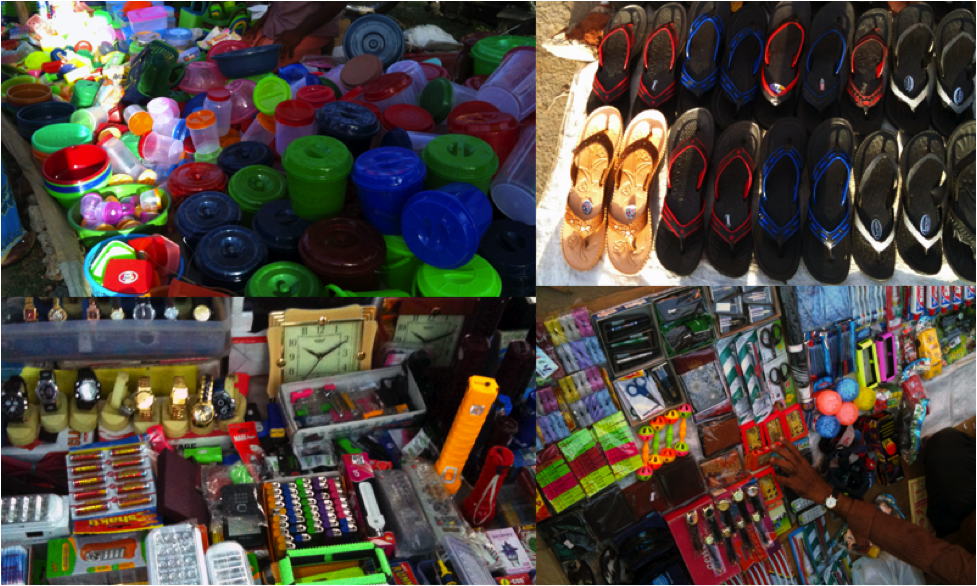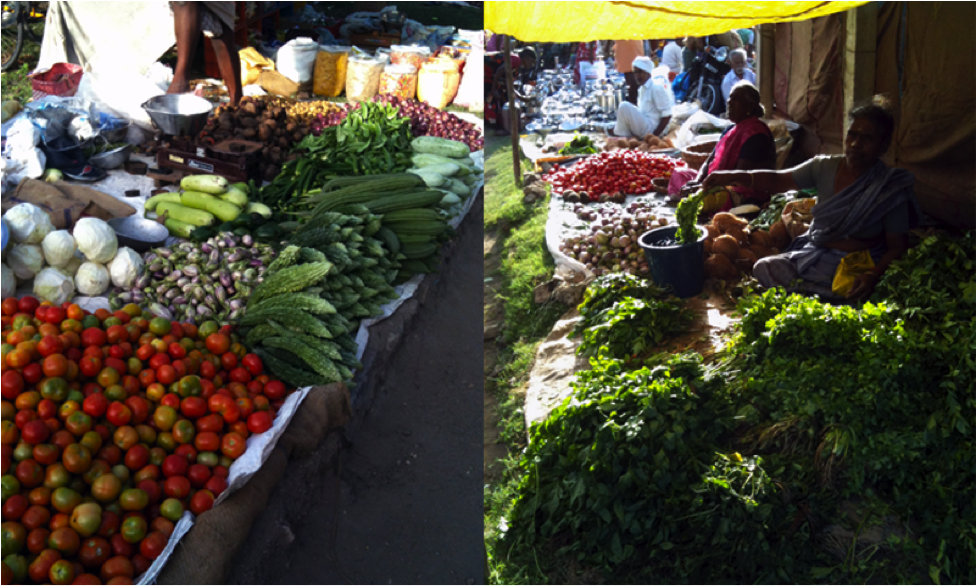Both of the images below are taken from a weekly market in a village 15 km from Pollachi. People living in villages around this market come here every week to buy essential household items. This market primarily sells fresh farm vegetables, but a large number of vendors from the nearby town also sell cheap plastic products, cheap electronics, cheap sandals, cheap cosmetics, and more. ”Cheap” is the buzz word here.
Most of the products that you see above are priced from 5 rupees ($0.09) to 100 rupees ($1.80), including wrist watches and LED torch lights (flashlights). A chat with one of the market’s regular electronics vendors revealed that he gets a good margin for cheap products and that customers are more inclined to buy a cheaper product that will last few months compared to an expensive, long-lasting product. While I was chatting with him, a few of his old customers showed up carrying broken torch lights and wall clocks which they bought only a couple of weeks ago.
Interestingly enough, the same people who bought all of these cheap products were very particular about quality when they moved to the vegetable vendors. After a lot of examination, they only bought the fresh vegetables at the market. The village market demonstrates that there is no simple correlation between a consumer’s sense of quality and price. On a larger level, it represents the complexities of village life/markets and breaks through the idealization and generalizations of village life.
Essmart is committed to bringing high-quality essential technologies to rural households, but we also accept this comes at an extra upfront cost for our customers. This leaves many questions unanswered about where Essmart fits into the ecosystem of rural markets and household consumption. But these unknowns are also why we are committed to being in the field, where we can more thoroughly ask the right questions and explore these complexities.



Follow Us!